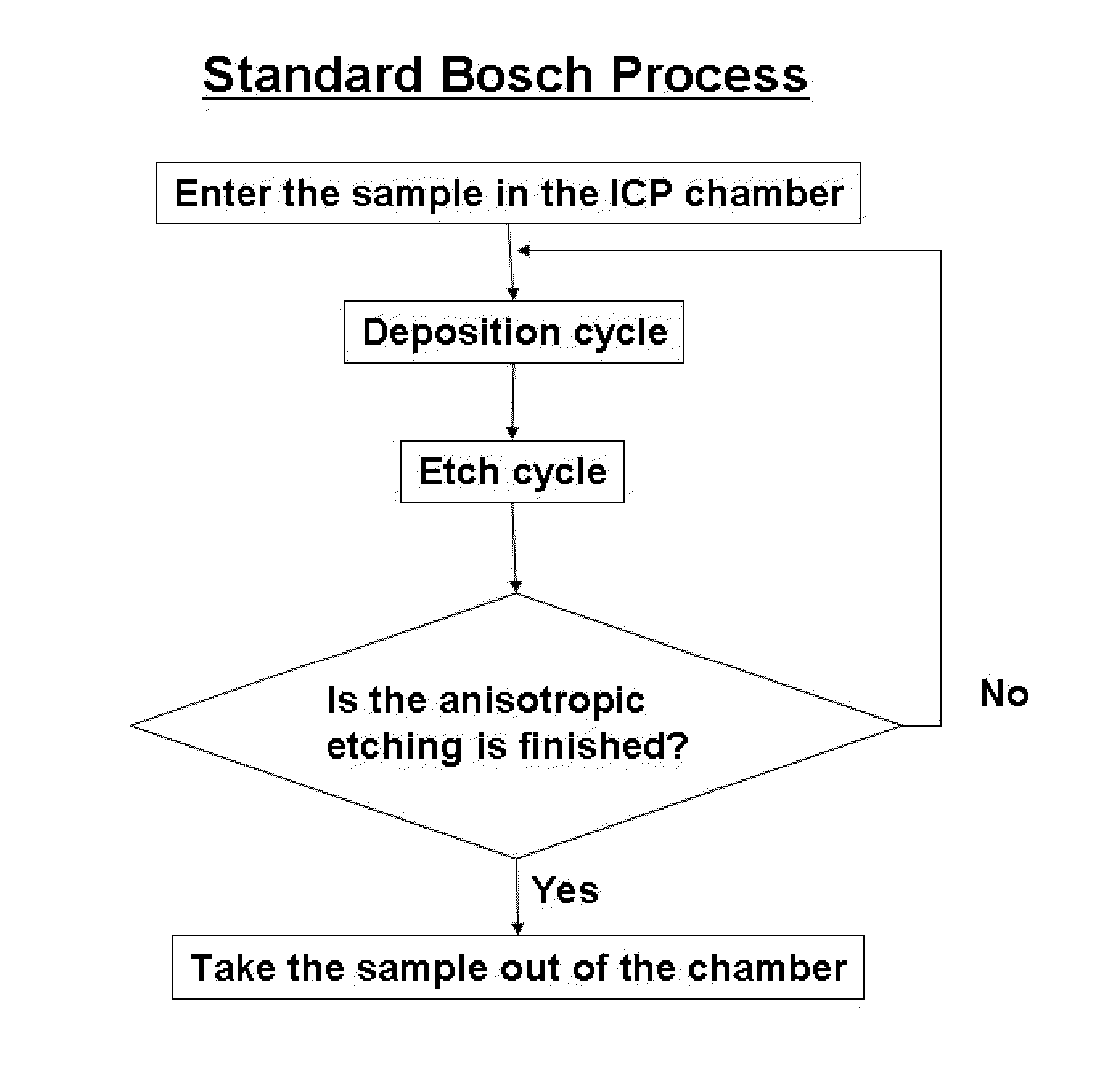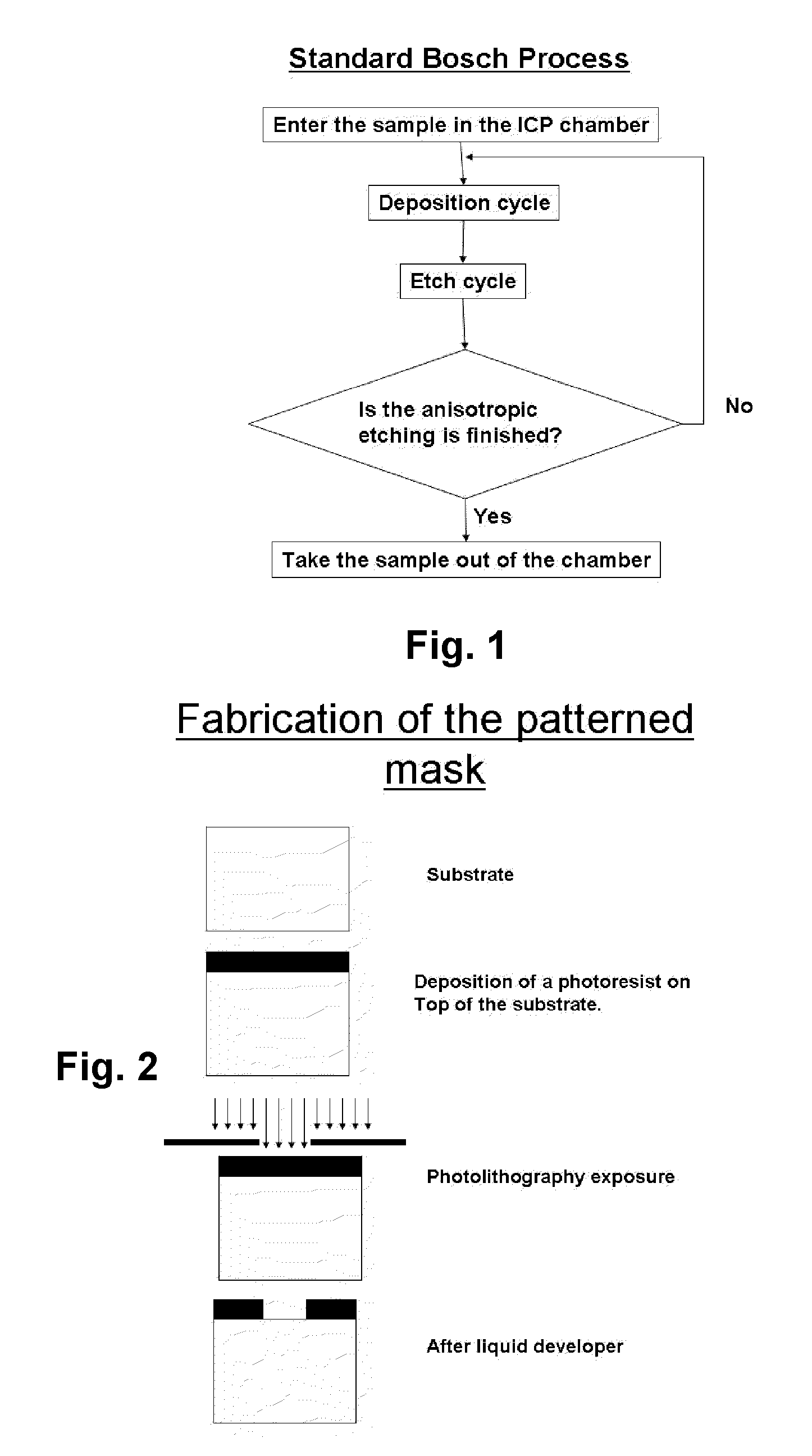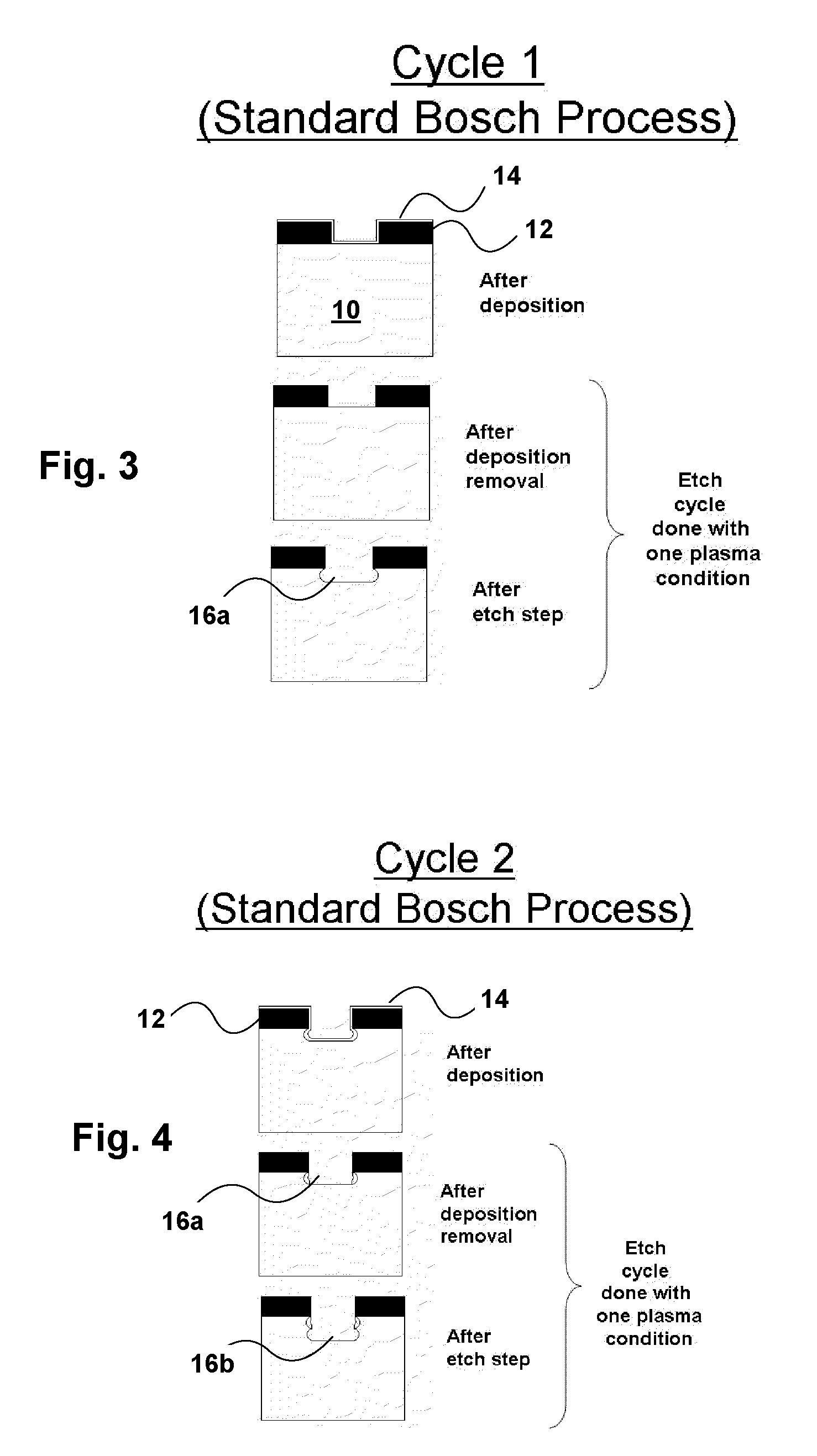Deep reactive ion etching
a reactive ion and etching technology, applied in the direction of decorative surface effects, electrical equipment, decorative arts, etc., can solve the problems of large scallop dimensions, unwanted sidewall roughness, non-uniformity across the wafer, etc., to prevent the growth of roughness, reduce the time to completely remove the deposition in the next deposition removal step, and improve the effect of etching quality
- Summary
- Abstract
- Description
- Claims
- Application Information
AI Technical Summary
Benefits of technology
Problems solved by technology
Method used
Image
Examples
Embodiment Construction
[0062]FIG. 11 shows a sequence diagram in accordance with an embodiment of the present invention. After the substrate has been patterned with a photoresist mask, such as depicted in FIG. 2 or by any other technique, the sample is placed in the ICP chamber. After being clamped on the platen (or chuck) and the process conditions have been stabilized in flow and pressure, the plasma is then lit, and the sample undergoes a deposition, followed by the etching step that removes the deposition. Next, comes a high pressure etching (main etch) as in the 3-step process shown in FIG. 7. Finally, the cycle finishes with another bombardment condition at low pressure and high platen power prior to the next cycle, making a total of four steps per cycle. These four steps are repeated until the right depth is obtained or an underneath etch stop layer is reached.
[0063]FIG. 12 is a schematic representation of the steps that the sample encounters during the first cycle of the sequence shown in FIG. 11....
PUM
| Property | Measurement | Unit |
|---|---|---|
| pressure | aaaaa | aaaaa |
| pressure | aaaaa | aaaaa |
| pressure | aaaaa | aaaaa |
Abstract
Description
Claims
Application Information
 Login to View More
Login to View More - R&D
- Intellectual Property
- Life Sciences
- Materials
- Tech Scout
- Unparalleled Data Quality
- Higher Quality Content
- 60% Fewer Hallucinations
Browse by: Latest US Patents, China's latest patents, Technical Efficacy Thesaurus, Application Domain, Technology Topic, Popular Technical Reports.
© 2025 PatSnap. All rights reserved.Legal|Privacy policy|Modern Slavery Act Transparency Statement|Sitemap|About US| Contact US: help@patsnap.com



